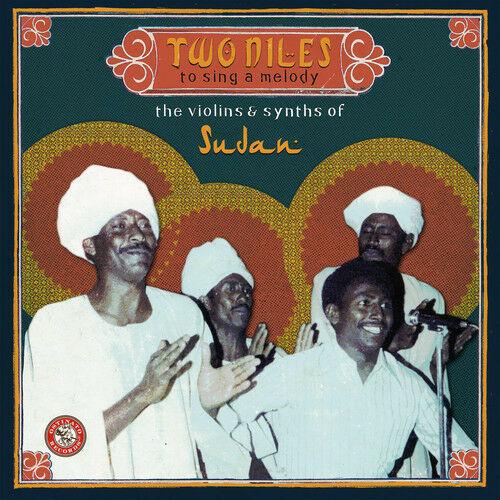Описание
Two Niles To Sing A Melody: The Violins & Synths – Two Niles To Sing A Melody: The Violins & Synths [New Vinyl]
Title: Two Niles To Sing A Melody: The Violins & Synths
Format: Vinyl
UPC: 843563105658
Condition: New
Release Date: 2018
Record Label: Ostinato Records
Album Tracks
1. Al Bareedo Ana (The One I Love) Emad Youssef
2. Ma Kunta Aarif Yarait (I Wish I Had Known) Abdel El Aziz Al Mubarak
3. Min Ozzalna Seebak Seeb (Forget Those That Divide Us) Kamal Tarbas
4. Arraid Arraid Ya Ahal (Love, Love Family) Madjzoub Ounsa
5. Malo Law Safeetna Inta (What If You Resolve Whats Between Us?) Khojali Osman
6. Ma Hammak Azabna (You Dont Care About My Suffering) (Live) Zaidan Ibrahim
7. Igd Allooli (The Pearl Necklace) Saied Khalifa
8. Ma Aarfeen Nagool Shino! (We Dont Know What to Say!) Taj Makki
9. Alamy Wa Shagiya (My Pain and Suffering) (Live) Hanan Bulu Bulu
10. Droob A Shoag (Paths to Love) Abdelmoniem Ekhaldi
11. Galbi La Tahwa Tani (My Heart, Dont Fall in Love Again) Samira Dunia
12. Al Sourah (The Photo) Mohammed Wardi
13. Al Zaman Zamanak (Its Your Time) Abdullah Abdelkader
14. Al Wilaid Al Daif (The Youth Who Came as a Guest) Mustafa Modawi & Ibrahim El Hassan
15. Elhabeeb Wain? (Where is My Sweetheart?) Composed by Ibrahim El Kashif
16. Al Mursal (The Messenger) Mohammed Wardi
In Sudan, the political and cultural are inseparable. In 1989, a coup brought a hardline religious government to power. Music was violently condemned. Many musicians and artists were persecuted, tortured, forced to flee into exile – and even murdered, ending one of the most beloved music eras in all of Africa and largely denying Sudan’s gifted instrumentalists, singers, and poets, from strutting their creative heritage on the global stage. What came before in a special era that protected and promoted the arts was one of the richest music scenes anywhere in the world. Although Sudanese styles are endlessly diverse, this compilation celebrates the golden sound of the capital, Khartoum. Each chapter of the cosmopolitan city’s tumultuous musical story is covered through 16 tracks: from the hypnotic violin and accordion-driven orchestral music of the 1970s that captured the ears and hearts of Africa and the Arabic-speaking world, to the synthesizer and drum machine music of the 1980s, and the music produced in exile in the 1990s. The deep kicks of tum tum and Nubian rhythms keep the sound infectious. Sudan of old had music everywhere: roving sound systems and ubiquitous bands and orchestras kept Khartoum’s sharply dressed youth on their feet. Live music was integral to cultural life, producing a catalog of concert recordings. In small arenas and large outdoor venues, musical royalty of the day built Khartoum’s reputation as ground zero for innovation and technique that inspired a continent. Musicians in Ethiopia and Somalia frequently point to Sudan’s biggest golden era stars as idols. Mention Mohammed Wardi – a legendary Sudanese singer and activist akin to Fela Kuti in stature and impact in his music and politics – and they often look to the heavens. Such is the reputation of Sudanese music, particularly in the Sudanic Belt,” a cultural zone that stretches from Djibouti all the way west to Mauritania, covering much of the Sahara and the Sahel, lands where Sudanese artists are household names and Sudanese poems are regularly used as lyrics until today to produce the latest hits. Sudanese cassettes often sold more in Cameroon and Nigeria than at home. But years of anti-music sentiment have made recordings in Sudan difficult to source. Ostinato’s team traveled to Ethiopia, Somalia, Djibouti, and Egypt in search of the timeless cultural artifacts that hold the story of Africa’s most mesmerizing cultures. That these cassette tape and vinyl recordings were mainly found in Sudan’s neighbors is a testament to Sudanese music’s widespread appeal.
“





